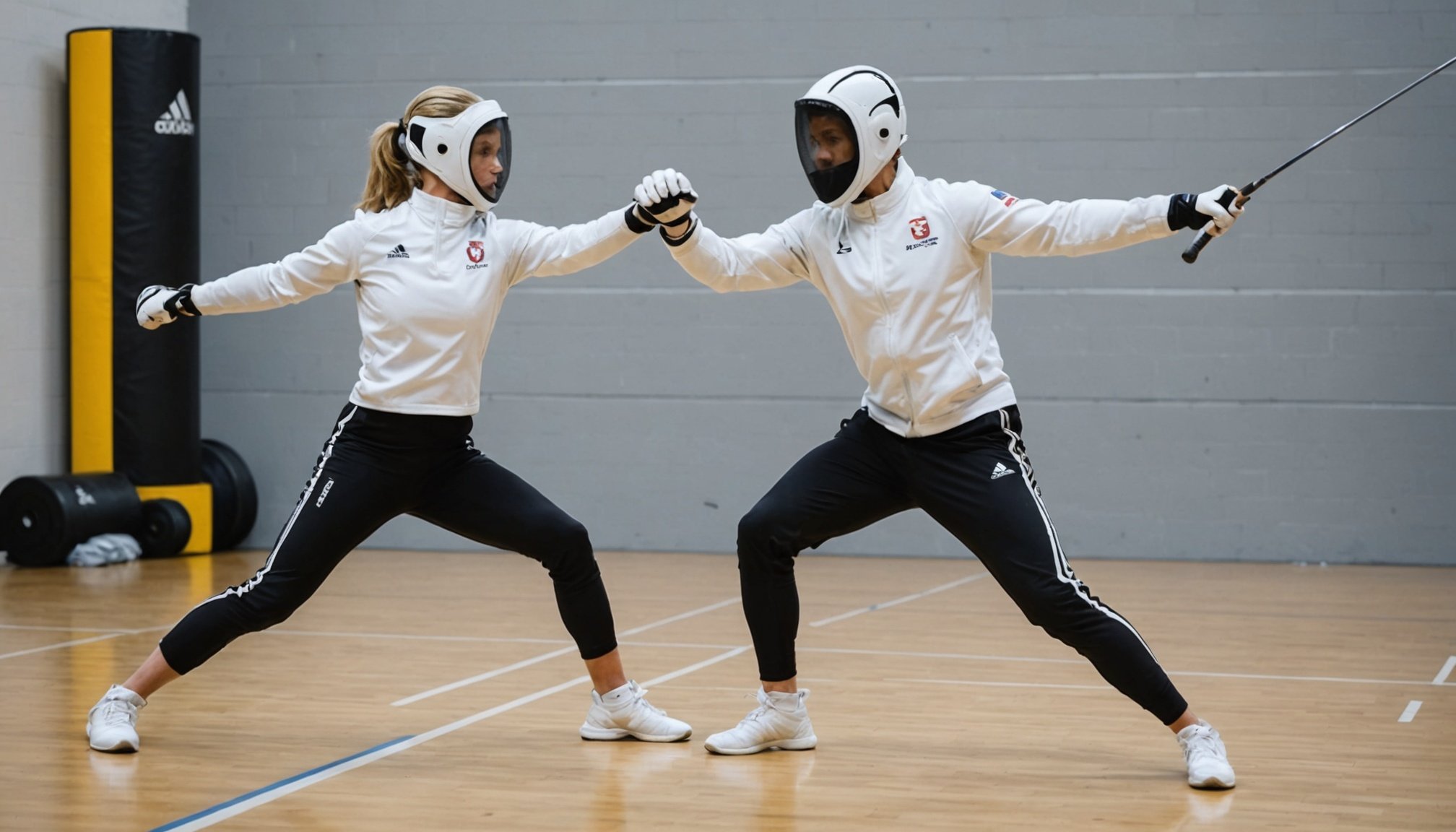Overview of Dynamic Plyometric Training
Dynamic plyometric training is an intense exercise method that leverages explosive movements to boost athletic performance. This technique is not merely about jumping around; it’s a structured approach that aims to enhance muscle power and speed, crucial for sports such as fencing. By engaging in dynamic movements, athletes can significantly improve their fencing performance, translating into quicker footwork and faster reaction times.
Benefits for Fencing
In the world of fencing, where milliseconds can determine the outcome of a match, dynamic plyometric training offers an edge. It focuses on increasing muscle elasticity and neural adaptation. These changes enhance your ability to perform swift and powerful movements, a core component of fencing success.
Designing Effective Training Programs
To maximize the benefits, it’s vital to incorporate the right training techniques. Begin with low-intensity exercises, gradually increasing difficulty. Ensure each session includes proper warm-up and cooldown phases to prevent injuries. Incorporating variety, like bounding, box jumps, and medicine ball throws, keeps the routine engaging while targeting different muscle groups. Always maintain technical precision, prioritising quality over quantity to produce lasting improvements. As you’re designing sessions, tailor the exercises to align with individual skill levels and specific aspects of fencing performance needing enhancement.
Specific Dynamic Plyometric Exercises for Fencing
Understanding plyometric exercises is essential for enhancing fencing training and ultimately boosting performance enhancement. These exercises are designed to improve explosive power, agility, and reaction time—all crucial for fencing.
Also to see : Mastering defense: how biomechanics transforms training for uk fighters
Box Jumps
Box jumps are a fundamental plyometric exercise that can greatly enhance explosive leg strength, critical for fencers during lunges and retreats. To perform box jumps safely and effectively, maintain a shoulder-width stance and ensure your knees align with your toes throughout the jump. Incorporating box jumps into fencing training involves starting with lower heights and gradually increasing as leg strength and confidence grow. Include them in warm-up routines or high-intensity workouts to optimize performance.
Depth Jumps
Depth jumps focus on improving reaction time and agility by harnessing the mechanics of dropping from a height before immediately jumping upwards. Ensure proper form by landing softly and minimizing ground contact time. Beginners should do these plyometric exercises no more than once per week, progressively increasing frequency with improved strength and joint stability. They’re key for faster directional changes in matches.
Lateral Bounds
Lateral bounds concentrate on enhancing lateral movement, a fundamental skill in fencing maneuvers. Structure this exercise by performing lateral jumps with intensity while maintaining balance. Focus on landing softly to prevent injury, and ensure a surface free of obstacles. These bounds, executed with correct form, significantly contribute to a fencer’s speed and versatility.
Benefits of Plyometric Training for Fencing Athletes
Plyometric training is a game-changer for fencing athletes, delivering explosive speed and power to lunges and attacks. This type of exercise focuses on quick, intense movements that enable fencers to transition seamlessly from defence to attack. But the benefits of plyometric training extend beyond just skill enhancement.
Firstly, fencing athletes experience significant improvements in athlete performance. Through consistent plyometric workouts, competitors build robust muscle strength that supports fast twitch muscle fibres, crucial for executing rapid fencing moves. Moreover, the plyometric benefits lead to better agility and flexibility, traits essential in facing any opponent.
In the long term, athletes gain from enhanced overall athletic conditioning. This comprehensive training boosts endurance and reduces the risk of injury by strengthening joints and improving balance. Consequently, fencers can maintain peak performance throughout lengthy competitions, setting a remarkable competitive edge.
Numerous UK fencing athletes have expressed satisfaction with their results from plyometric regimens. Many testify to sharper, quicker lunges and increased reflexes, often catching opponents off guard. Their testimonials underscore the substantial impact that strategic plyometric exercises have on securing victories and advancing careers.
Integrating Plyometric Training into a Fencing Regimen
Incorporating plyometric training into a fencing regimen can enhance an athlete’s explosive movements, providing a competitive edge. Effective integration requires careful planning within the fencing schedule to avoid unnecessary strain.
Weekly Training Structure
Balancing plyometric exercises with fencing practice is crucial. Begin by dedicating one or two sessions a week specifically for plyometric drills. These should complement, not replace, traditional fencing practices. It’s vital to include recovery and rest days to allow muscles to recuperate. A sample schedule might involve fencing practice on Mondays, Wednesdays, and Fridays, with plyometric training on Tuesdays and Saturdays, leaving Sundays for rest.
Monitoring Progress and Adjustments
Track improvements using performance metrics such as speed, agility, and jump height. Regularly evaluate athlete feedback to make necessary adjustments. This process underscores the importance of coaching and mentoring, which ensures athletes adhere to proper form and technique.
Addressing Safety Concerns
Injury prevention is paramount. Common injuries from plyometric training include joint and muscle strains. Mitigate risks by employing proper techniques such as graduated intensity programs and ensuring thorough warm-up and cool-down routines. Emphasising safety ensures long-term athletic success.











